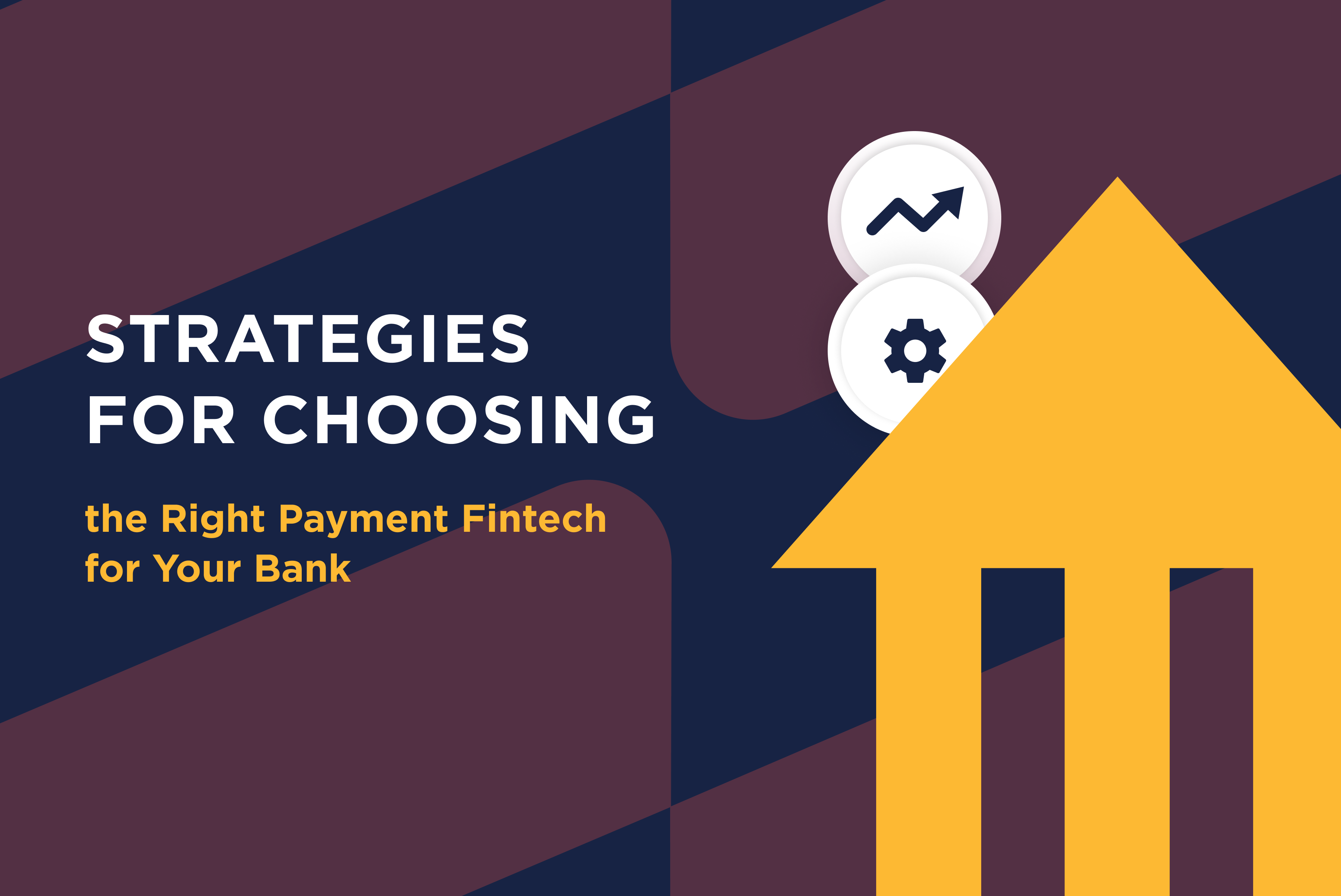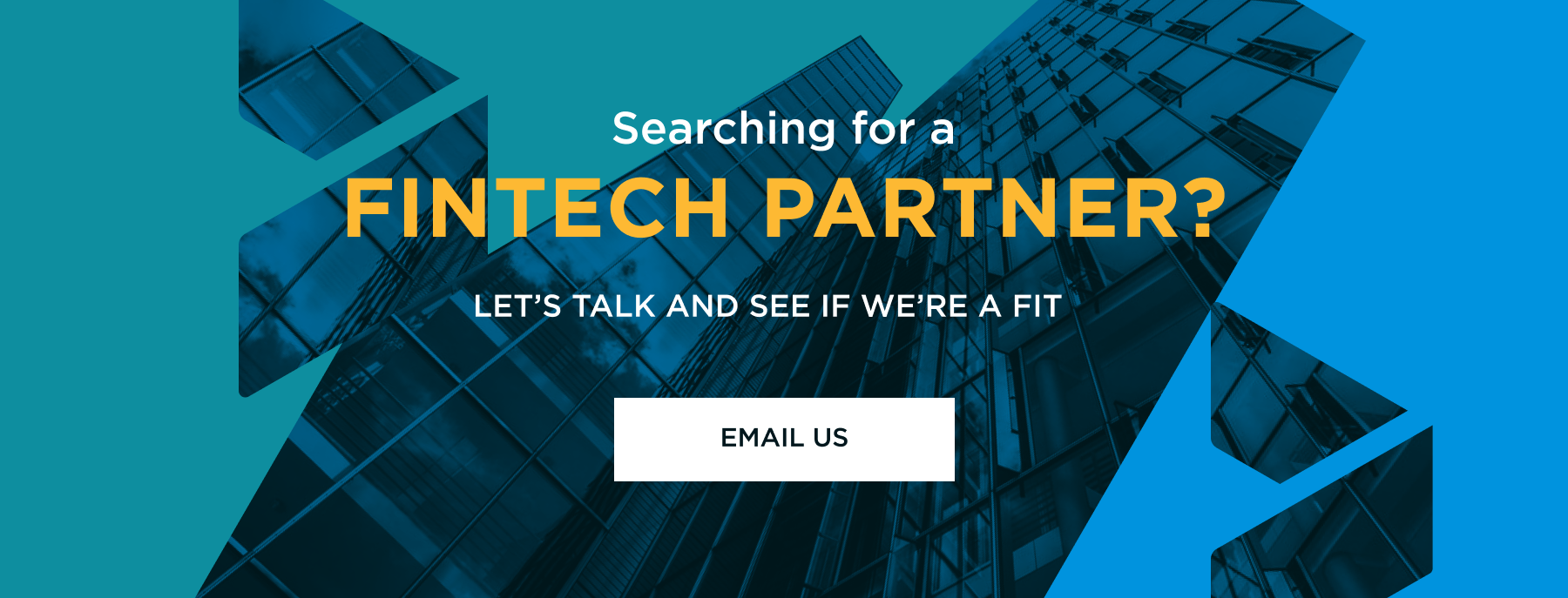The payments landscape is changing fast. Too fast, for some banks.
To keep up with the ever-changing payments needs of their consumer and business customers, more banks are partnering with fintechs for omni-channel payment capabilities. In fact, some large banks are making hefty venture capital investments in payments fintech startups. By partnering with a fintech, banks can focus on what they do best – moving, storing, and lending money – while using a fintech to deliver innovative payments solutions that provide an exceptional customer experience.
An article by the Wharton School of Business predicts that partnerships between banks and fintechs will be a linchpin for riding the wave of change in payments successfully, no matter the size of banks.
The question becomes: How do you choose the right payment fintech for your bank?
9 Key Considerations when Evaluating a Fintech
Here are strategies for determining the right payment fintech for your bank:
 Open APIs
Open APIs
Most banks have a hodgepodge of legacy systems and payment networks that have been built out over the past 20 years. Banks do not have the means or the appetite to abandon that infrastructure overnight. But juggling multiple platforms results in a disorganized and undesirable user experience.
The open APIs in some omni-channel payment solutions make that infrastructure as seamless as possible, with minimal IT impact. Open APIs also eliminate the need for onerous, costly, or hard-to-maintain programming. So, make sure a fintech has open APIs and is committed to investing in that area.
 Usability
Usability
Eighty four percent of customers surveyed by salesforce.com say that the experiences provided by a company are as important to them as its products and services offered. And a whopping 75 percent of respondents say that they expect companies to use new technologies to create better experiences for them.
Today’s payments solutions must always start with the customer, whether it is a consumer or a business. That is why it is imperative that banks partner with a payments fintech with the capabilities and tools to meet customer needs. Consider a fintech with an omni-channel platform that can meet the breadth of customer needs.
Leading omni-channel payment solutions enable customers to pay and get paid in their desired format, including check, ACH, card or Real-Time Payment (RTP). These solutions providers also are investing to support new payment modalities as they emerge. Omni-channel payment solutions may also offer single-sign on to eliminate multiple logins. Similarly, some fintechs offer services for bringing customers onto your platform.
 Compatibility
Compatibility
Banks should ensure that a fintech shares their vision of where things are going in the payment market. Is the fintech’s digital strategy a match? And does the fintech have use cases and/or a customer segmentation that match the bank’s priorities? Banks also should carefully determine whether a fintech’s capabilities align with the bank’s needs.
 Strong Partner Relationships
Strong Partner Relationships
Banks are asked for something new every day. Some banks think they need multiple fintech partners to provide a useful number of offerings with exceptional service. On the contrary, many fintechs already have partners for solutions they cannot offer that integrate well their own product set.
Choosing a fintech with strong pre-existing partnerships (and growing) means your customers will have a more seamless and consolidated experience.
 Adaptability
Adaptability
Bill Gates once referred to banks as “dinosaurs.” While banks may have avoided the extinction that the tech visionary had in mind, there is no question that banks are slow to adapt.
Leading omni-channel payment solutions incorporate interactive messaging, attachments, digital signatures, dynamic ID verification and other administrative workflows that can be configured to any business need. Incorporating workflows into the payments stream also eliminates processing friction and accelerates the close. Omni-channel payment solutions also can be deployed fast, so banks do not miss out on market opportunities.
And leading omni-channel platforms can be used a fully functional demand deposit account with checks drawn against it, a sub-general ledger system for tracking money, a pre-paid card solution hidden behind the scenes or an e-wallet with terms and conditions. Additionally, the technology is flexible enough to support transactions that do not involve accounts.
 Data-driven
Data-driven
Robust monitoring of metrics is imperative to measuring results and return on investment. The combination of administrative workflows, open APIs and built-in business intelligent tools put critical information at the fingertips of bank decision-makers. But the information gathered should also be usable.
Steer-clear of fintechs that only offer the ability to dump the data into excel and then forensic-excel-formula your way through it. Instead, choose a fintech that offers and interactive Power BI reporting dashboard with meaningful reports.
In doing so you offer your customers business decision makers the ability to make well rounded decision based on accurate data months before your competitors.
 A Track Record of Innovation
A Track Record of Innovation
Banks are slow to adopt technologies that have not been widely deployed by other banks. Many banks also do excessive testing. Leading fintechs are the exact opposite. They move very, very fast.
Banks can count on having the most advanced payments technology available because the leading fintechs that provide omni-channel platforms are laser-focused on payments automation. For instance, fintechs have been crucial to the real-time payments initiatives of many banks. And many banks are leveraging fintechs to offer mobile payment capabilities to their clients.
Look for fintechs with a proven methodology for quickly evaluating, testing, and deploying emerging payment methods and technologies. And determine whether the fintech’s leadership has a strong vision of where the market is going, and a reasonable plan for addressing those trends.
 Proven Scalability
Proven Scalability
The payments solutions offered by many banks must support thousands of customers. The problem is that smaller fintechs cannot scale. Banks must perform due diligence to ensure that a fintech can support their current and anticipated volumes.
 Iron-clad Security
Iron-clad Security
Collaborating with the right fintech can extend the protections of a bank’s compliance and security platform. Leading fintechs are building tools to make it easier for businesses to mitigate potential compliance and security risks and to manage policies and procedures.
PCI widgets and physical, virtual, and tokenized cards safeguard payments information. And managed services mitigate risks through ID verification services (e.g. Know Your Customer), fraud and chargeback management, and automated settlement and reconciliation.
The modern cloud-based platforms used by most fintechs also are constantly changing to address threats; banks will not be tied to quarterly software updates.
McKinsey finds that 62 percent of fintech startups are tackling the retail banking segment and 11 percent are focused on large corporate banking. Payments is the most popular banking area to target.
Banks have a choice: compete with these fintechs for payments revenue or collaborate with them.
More banks are partnering with fintechs. The strategies described in this article will help ensure that your bank chooses the right fintech for its needs. If your bank is looking to partner with a payment fintech, contact Transcard to get started.




